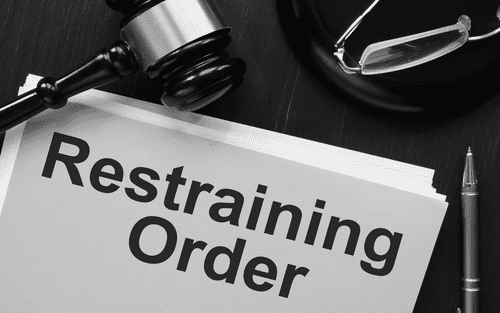“I need a restraining order.” That might be something a friend has jokingly said to you about an ex-boyfriend, something you overhear at a coffee shop, or a genuine plea for help from a frightened individual dealing with a stalker. In North Dakota, they are called Disorderly Conduct Restraining Orders, and they are available to any person who can prove they are the subject of unwanted actions from a person who intends to negatively affect them.
What Type Of Conduct Is “Disorderly”?
Disorderly conduct means intrusive or unwanted acts, words, or gestures that are intended to adversely affect the safety, security, or privacy of another person.
A common misunderstanding is that any intrusive or unwanted conduct can result in a restraining order. However, the North Dakota Supreme Court has held that it is not enough that the conduct is “unwanted” or that you “want the other person out of your life.” It must be “intended” by the actor that his conduct adversely affects the victim. Therefore, if your neighbor, due to her low social awareness, knocks on your door at 1:00 a.m. to borrow a cup of milk, that would not qualify for a restraining order (even if it happens many times, potentially). If your ex-boyfriend comes to your workplace repeatedly (and embarrassingly) to try to talk you back into a relationship with him, that would not qualify. The people in these examples have their motivations, but those motivations are not to adversely affect you.
A petitioner for a restraining order must allege specific conduct. In other words, he must describe the type of conduct, the date that it occurred, the number of times it happened, etc., with a certain level of detail. It is not enough for a petitioner to give vague, general allegations like “he harassed me,” or “her constant phone calls are driving me crazy.” At a hearing on the petition, the only evidence which can be presented is evidence of the conduct alleged in the petition. A petitioner cannot add new allegations at the hearing which weren’t specified in the petition.
The conduct must be “objectively” disorderly. It is not enough that the petitioner was afraid of the person, or that the petitioner felt threatened or intimidated; in other words, it is not a subjective standard. The standard is whether “a person of reasonable caution” would believe the conduct was intended for an adverse effect. Think of “a person of reasonable caution” as a regular man or woman with an ordinary sense of what is alarming or threatening. It is not a person who is unusually high or low sensitivity to any perceived threats of harm.
Who Can File?
Only the victim of the disorderly conduct, or the parent or guardian of a minor who is a victim, can seek a restraining order. Therefore, if your mother is being harassed by a coworker, she has to petition the court; you cannot do so on her behalf.
Temporary And Final Order
If the petitioner alleges sufficient grounds, the court can grant a temporary restraining order to provide protection until a full hearing can be conducted. This can afford some immediate and short-term protection in the event that a hearing for a final order can’t be scheduled promptly.
A hearing must be ultimately held and notice of the hearing must be given to the respondent. At the hearing, both parties will be allowed to present evidence to support or rebut the claims in the petition. If the restraining order is granted, it can provide protection for up to two years. The order can demand the respondent to cease the disorderly conduct, prevent the respondent from entering a certain proximity of the petitioner (e.g. 500 feet) or the petitioner’s home or place of employment, or prevent the respondent from communicating with the petitioner (including phone calls, text messages, emails, or contact via social media) or having a third party contact the petitioner on the respondent’s behalf.
Violation
It is a crime to violate a disorderly conduct restraining order, and a conviction can result in a class A misdemeanor. If a law enforcement officer has probable cause to believe that a violation has occurred, even if it was not committed in the presence of the officer, the officer can arrest the individual without a warrant.
Conclusion
If you have questions regarding this topic, then seek the advice of a family law attorney. Contact the SW&L family law team at 701-297-2890 or email us at: info@swlattorneys.com.
The information contained in this article and on this website is for informational purposes only. Do not rely on information on this website as legal advice. Please refer to the full disclaimer here.










